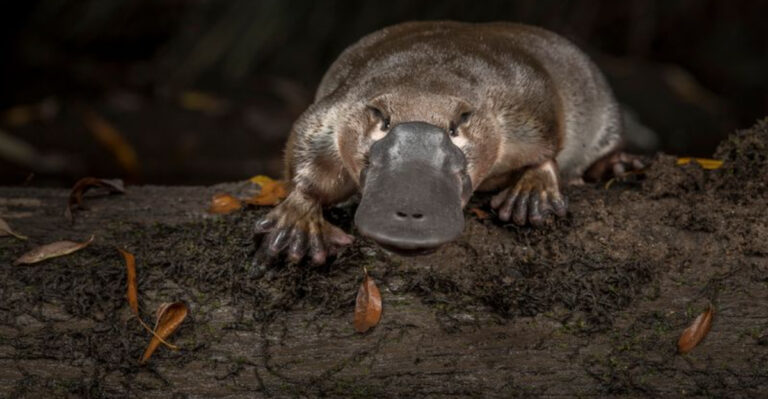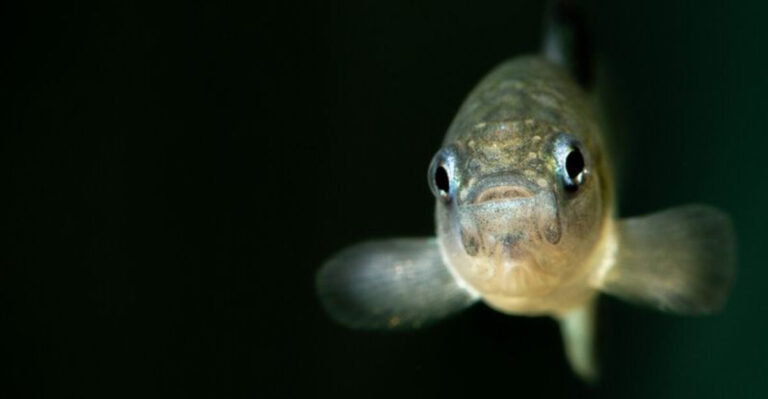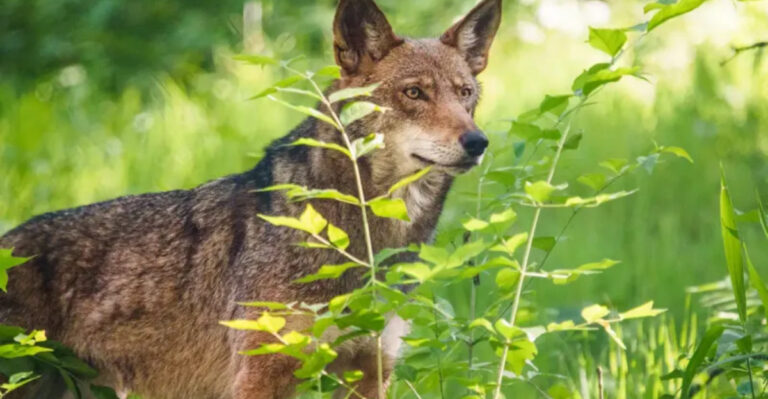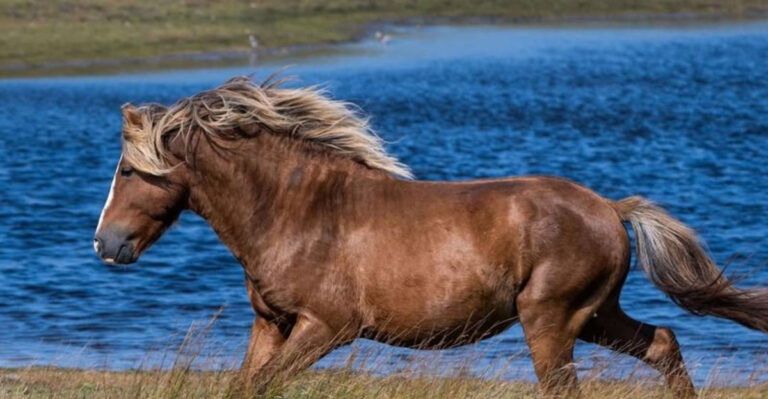Different Types Of Crane Birds And Their Unique Features
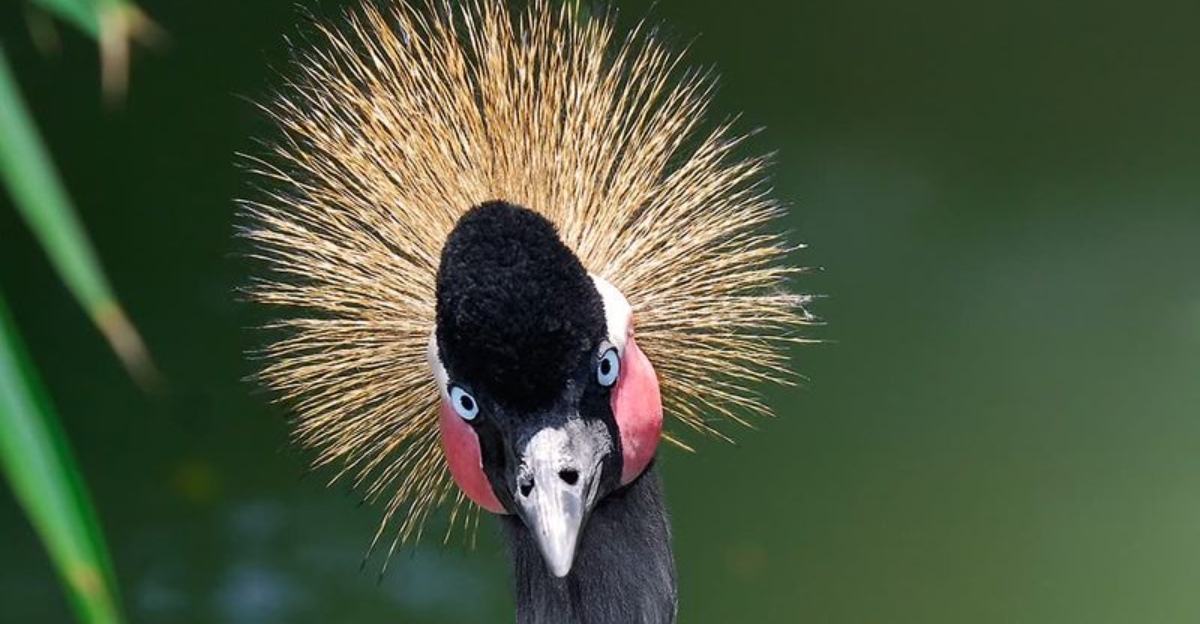
Crane birds captivate with their graceful movements and unique features. These tall, elegant birds are found across different continents and habitats, from wetlands to grasslands.
With their distinctive calls and fascinating mating dances, cranes have become symbols of longevity, fidelity, and good fortune in many cultures worldwide.
1. Sandhill Crane

Majestic travelers of North American skies, Sandhill Cranes gather in spectacular flocks during migration. Their trumpeting calls can be heard for miles across marshes and prairies.
Standing four feet tall with ash-gray feathers and crimson foreheads, these birds perform elaborate courtship dances that include jumping, bowing, and wing-flapping.
2. Whooping Crane
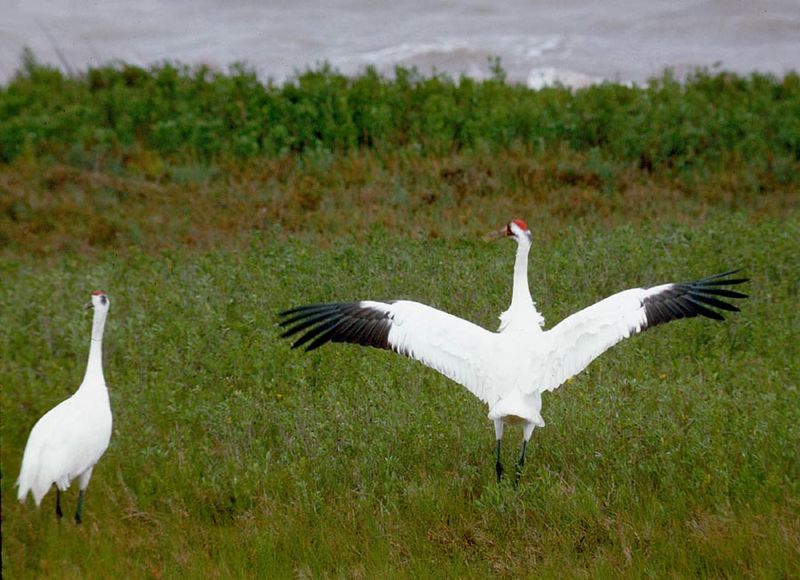
Once teetering on extinction with just 15 birds left in 1941, Whooping Cranes represent an incredible conservation comeback story. These magnificent white birds stand nearly 5 feet tall, making them North America’s tallest birds.
Their haunting calls echo across marshlands during dawn and dusk, while their striking black wingtips become visible only in flight.
3. Common Crane
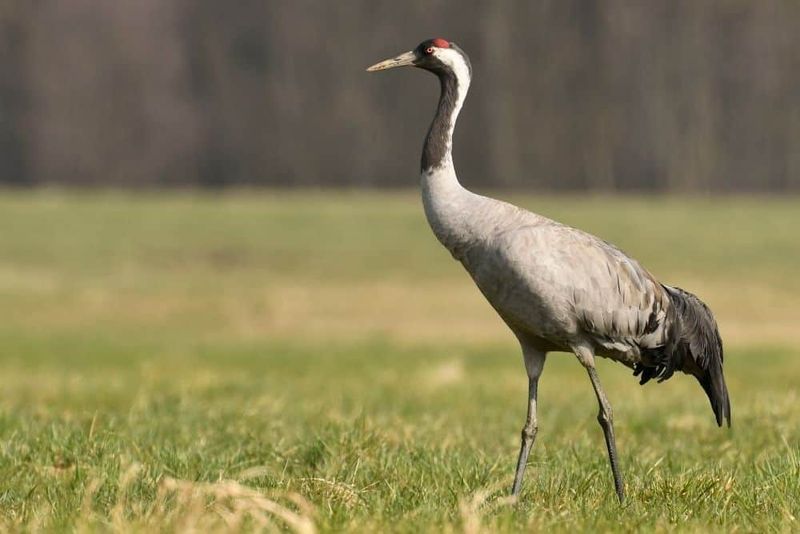
Folklore favorites across Eurasia, Common Cranes feature in countless myths and fairy tales. Their dramatic black-and-white neck pattern contrasts beautifully with slate-gray bodies.
During breeding season, these birds gather in massive flocks, turning quiet wetlands into bustling crane metropolises. Their bugling calls create a primeval soundtrack that has inspired poets for centuries.
4. Red-Crowned Crane
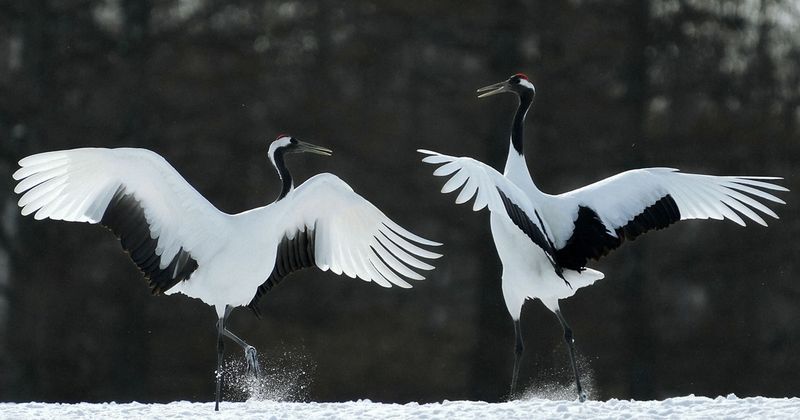
Revered as sacred in Japanese culture, these striking birds appear in countless artworks and symbolize longevity and fidelity. Their snow-white bodies contrast dramatically with black wing feathers and the vivid red crown that gives them their name.
Watching pairs perform synchronized courtship dances—jumping, bowing, and calling in unison—feels like witnessing living poetry in motion.
5. Demoiselle Crane
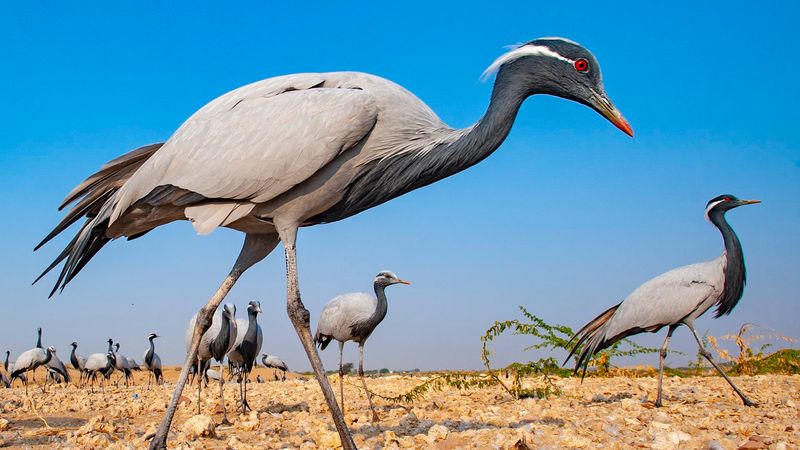
Petite yet powerful, the Demoiselle holds the title of smallest crane species, though still stands an impressive 3 feet tall! Their striking white ear tufts cascade down slender necks like elegant scarves.
These remarkable birds undertake one of nature’s most challenging migrations, crossing the Himalayas at altitudes where oxygen is scarce. Some villages along migration routes hold festivals celebrating their annual passage.
6. Black Crowned Crane
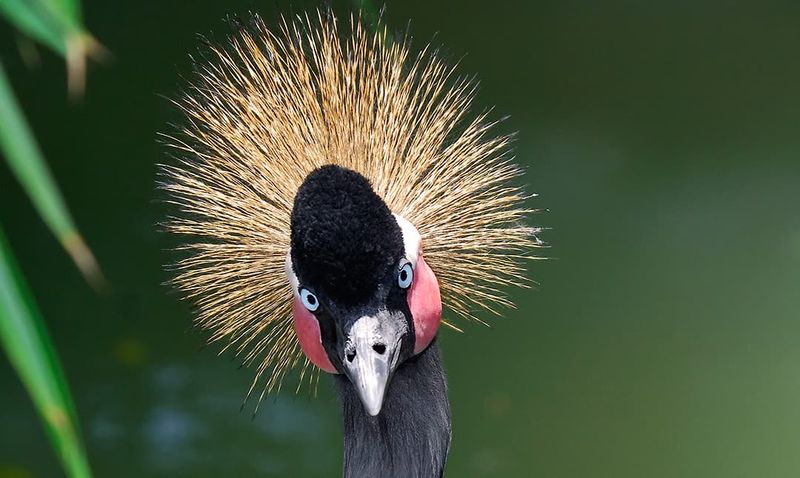
African royalty in bird form, Black Crowned Cranes sport spectacular golden crown feathers that stand upright like a natural tiara. Their velvety black bodies and bright red cheek patches create a striking appearance unlike any other crane.
Unlike most cranes, these birds can perch in trees thanks to a long hind toe. Local folklore often portrays them as wise messengers between heaven and earth.
7. White-Naped Crane
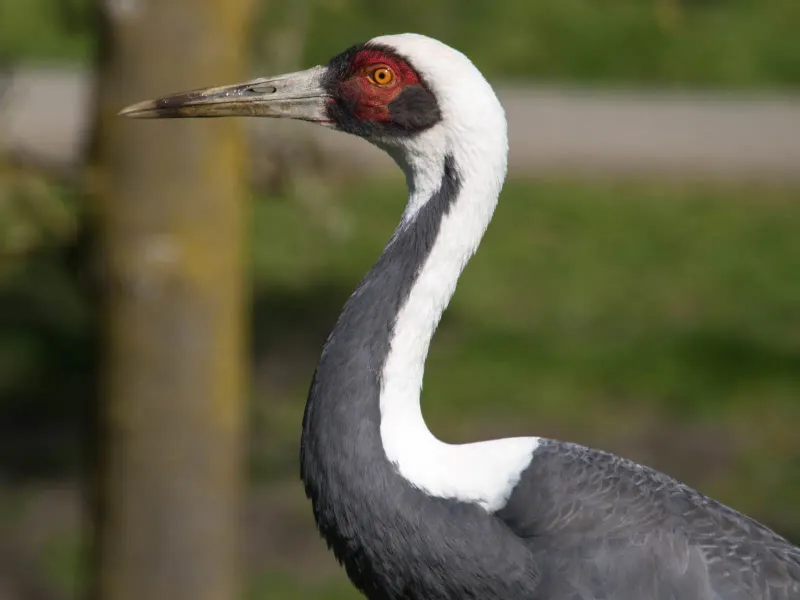
Sporting a distinctive white patch that wraps around the back of their head like a scarf, these elegant birds create lifelong pair bonds. Their soft gray bodies and crimson facial patches make them instantly recognizable.
Sadly, these beautiful cranes face serious habitat threats across their Asian range. Traditional Korean folk tales often feature these birds as symbols of marital harmony and devotion.
8. Siberian Crane
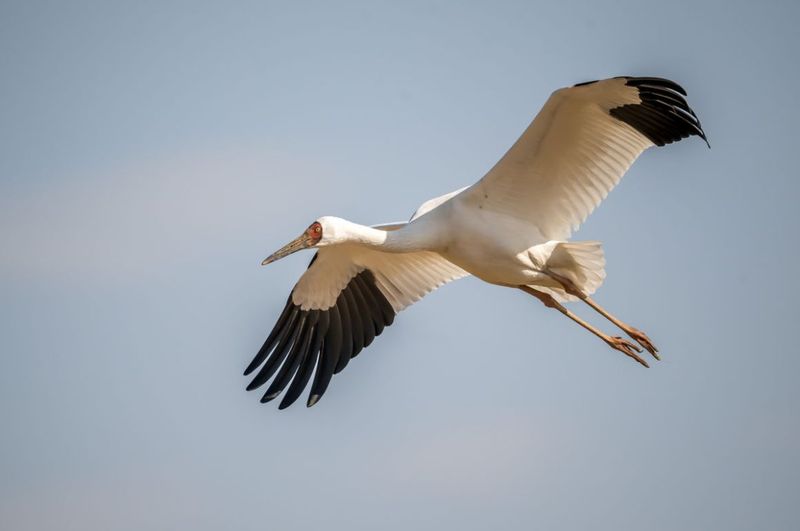
Ghost-like in appearance, these snow-white cranes with crimson faces navigate between breeding grounds in Arctic Russia and wintering areas in China and India. Their marathon migrations span over 3,000 miles!
Deeply woven into Siberian indigenous cultures, these birds represent purity and spiritual connection. Sadly, with fewer than 4,000 remaining, they’re fighting a battle against extinction.
9. Brolga
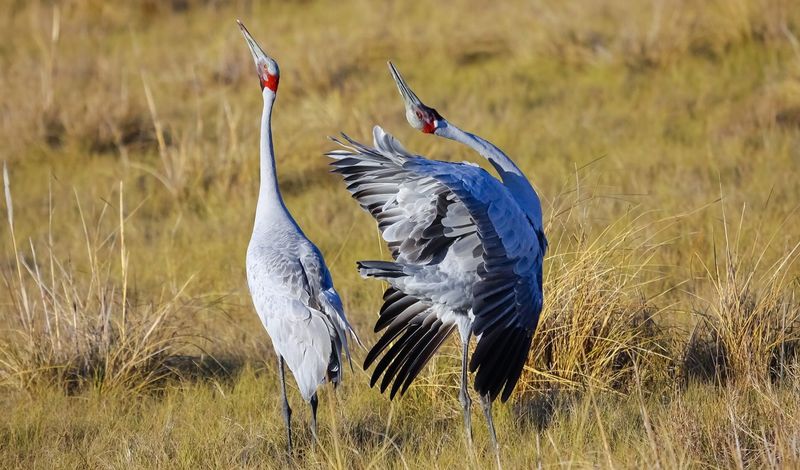
Australia’s dancing giants perform some of nature’s most elaborate courtship rituals. Brolgas leap, bow, and pirouette with wings outstretched in synchronized displays that indigenous Australians have celebrated for thousands of years.
Their trumpeting calls carry for miles across the outback. With slate-gray bodies and distinctive red patches extending from their eyes down their necks, these birds embody the wild spirit of Australia.
10. Manchurian Crane
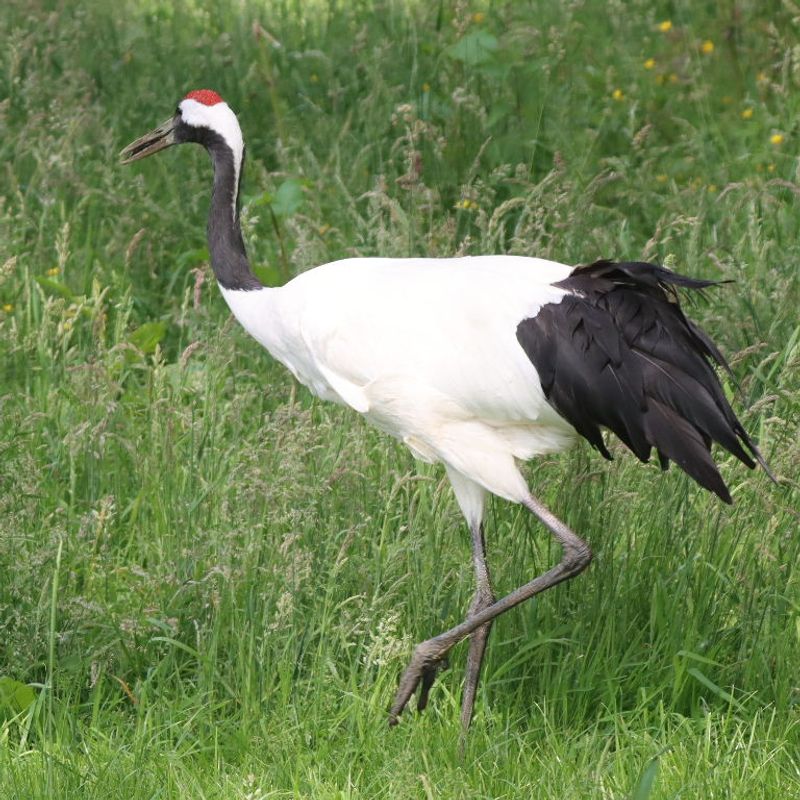
Often called the “crane of the east,” these majestic birds hold deep cultural significance across northeastern Asia. Their striking white bodies contrast beautifully with black primary feathers that become visible during flight.
Ancient Chinese paintings frequently depict these cranes alongside pine trees as symbols of longevity. Their elaborate courtship dances include synchronized jumping, bowing, and trumpeting calls that echo across their wetland homes.
11. Crowned Crane
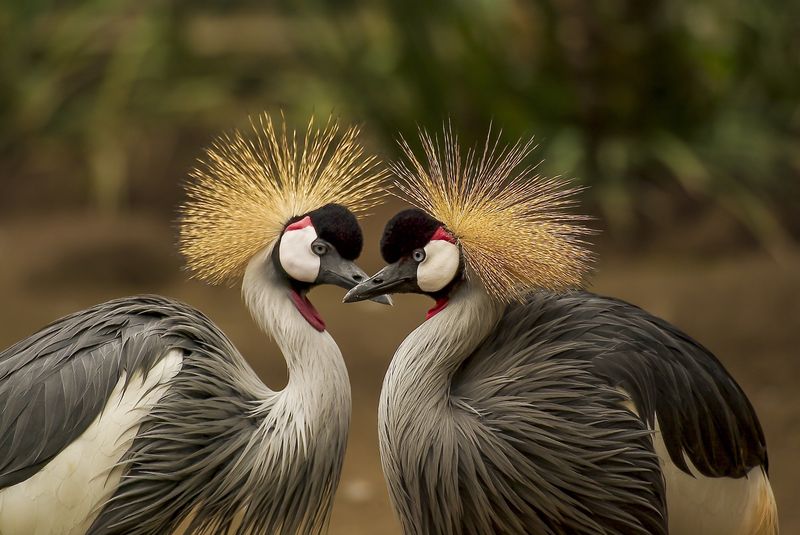
Flamboyant and unforgettable, these African beauties sport golden crown feathers that fan out like a natural headdress. Unlike most cranes, they can perch in trees thanks to a special hind toe.
Their honking calls punctuate African savannas at dawn and dusk. Featured on Uganda’s national flag, these birds combine elegance with a touch of wild extravagance in their appearance.
12. Grey Crowned Crane
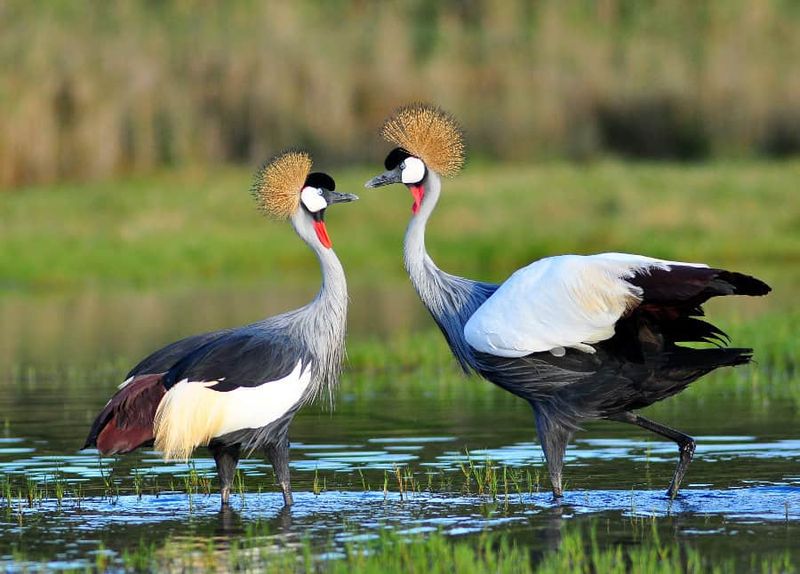
National bird of Uganda, these cranes wear nature’s most spectacular headpiece—a crown of stiff golden feathers that catches sunlight like a natural tiara. Their striking appearance combines velvety grey bodies with bright white wing patches.
Unlike other cranes, they produce distinctive honking calls rather than trumpeting sounds. Local folklore often portrays them as messengers between the heavens and earth.
13. Florida Sandhill Crane
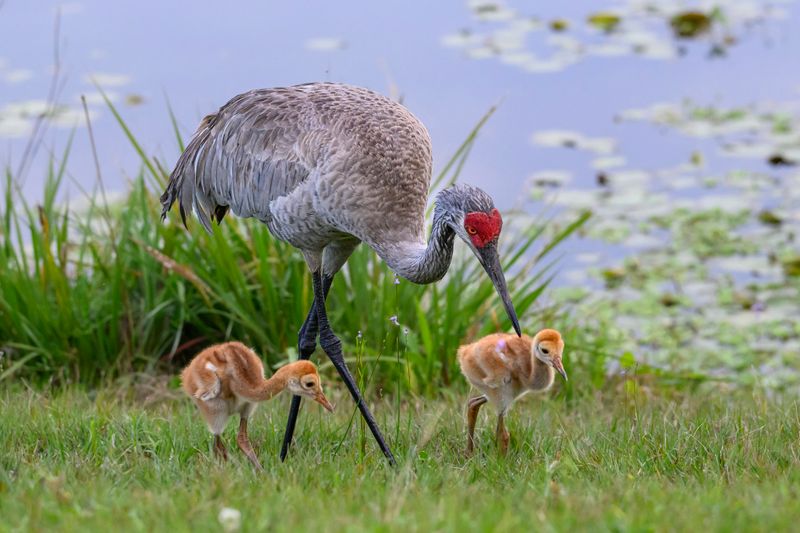
Year-round Florida residents, these cranes differ from their northern cousins by skipping the exhausting migration journey. Families of cranes—often a mated pair with one or two colts—have become familiar sights in suburban neighborhoods.
Their prehistoric-sounding calls echo across Florida’s marshlands and golf courses alike. Conservation efforts have helped these birds adapt to human-altered landscapes better than many other crane species.
14. Great Crane
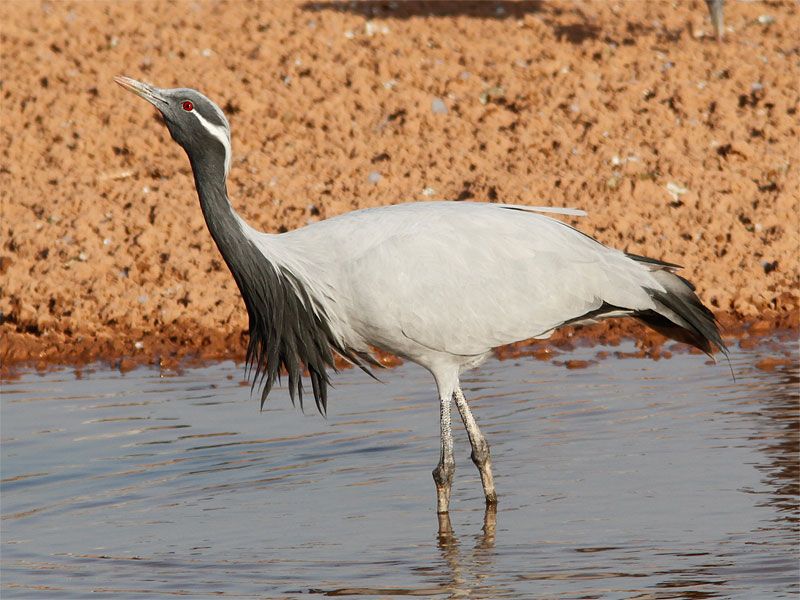
Masters of marathon migration, Great Cranes navigate from European breeding grounds to African wintering areas with remarkable precision. Their elegant silhouettes—tall and slender with distinctive head plumes—create unforgettable impressions against sunset skies.
Ancient cave paintings across Europe feature these birds, showing their long-standing connection with human cultures. Their bugling calls create a haunting soundtrack that has inspired countless folk tales.
15. Black-Necked Crane
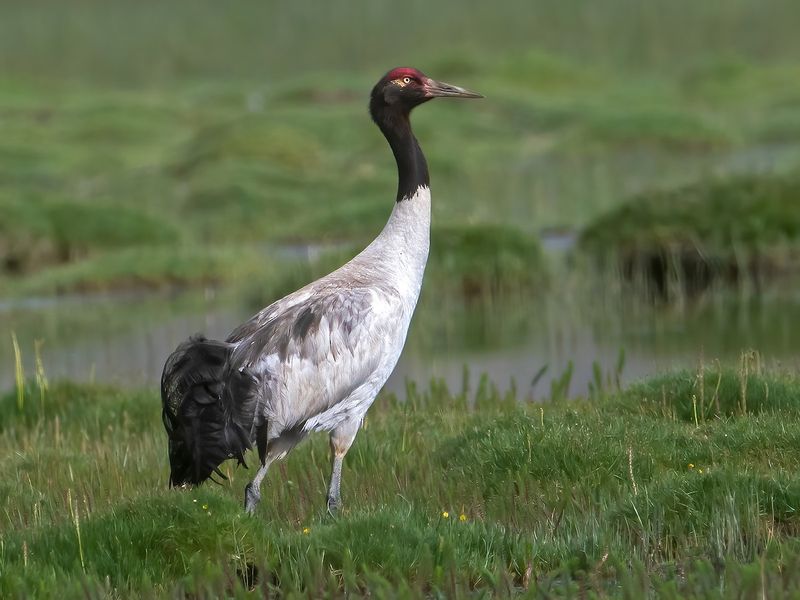
Himalayan high-flyers, these cranes thrive at elevations that would leave humans gasping for breath. Their striking black necks contrast beautifully with white bodies, creating a distinctive silhouette against snowy mountain backdrops.
Buddhist monasteries throughout their range celebrate these birds as symbols of harmony. Breeding pairs perform synchronized dancing rituals that include jumping, wing-flapping, and bowing—behaviors that have inspired traditional Himalayan dances.

